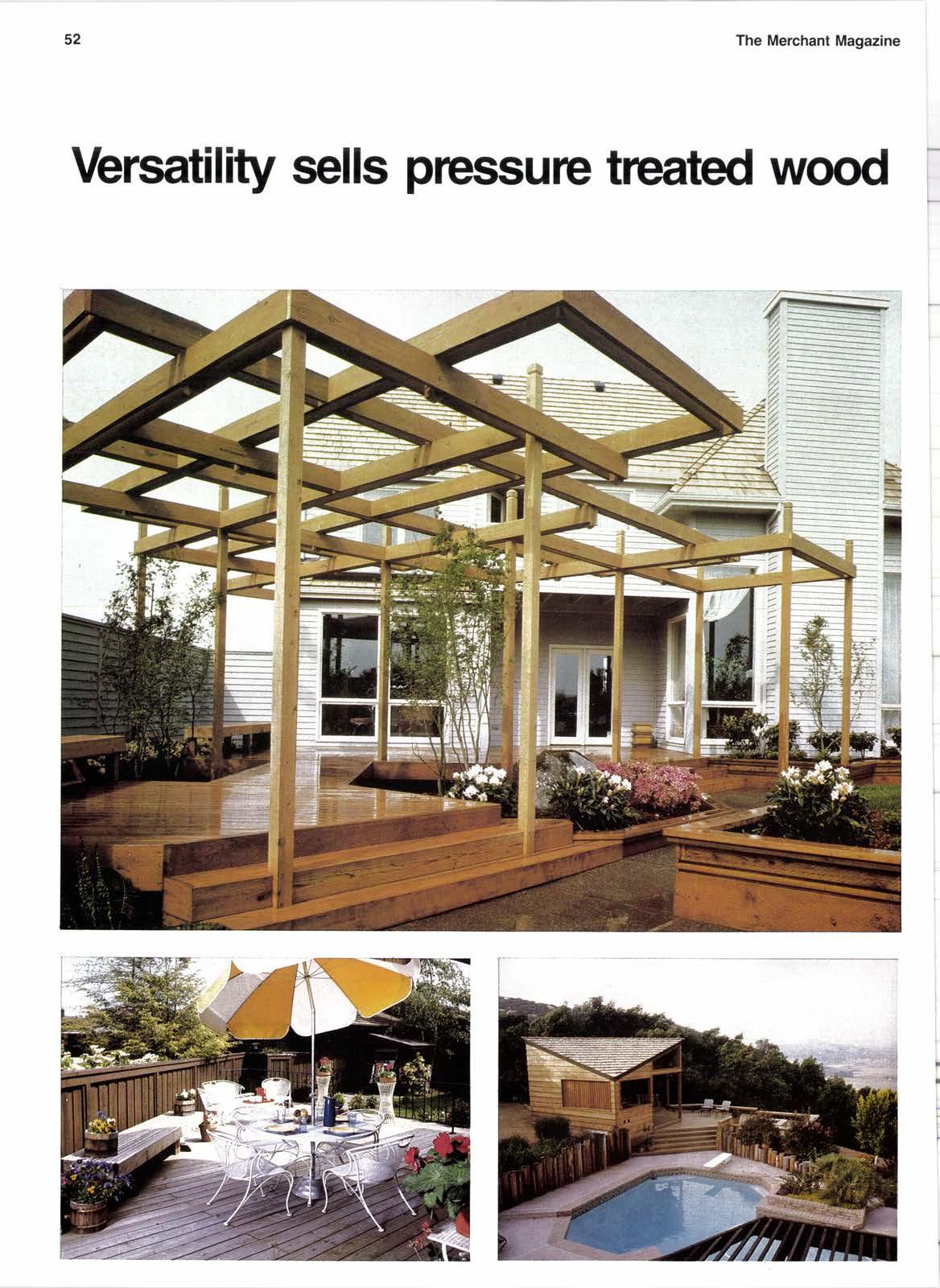
2 minute read
ls therc rcally a befter hadwood?
THE BIG debate in the I hardwood business at present is solid wood versus veneer.
With catch phrases such as "Yuppies prefer solid wood" adding fuel to the discussion among customers, people are taking sides. Unfortunately, while they may declare their position in favor of one or the other form of hardwood, many of those doing so really don't know which is best. In fact, they may noteven know the difference between solid hardwood and hardwood veneer. In addition, they probably have never heard of them being used in combination.
Faced by this opinionated ignorance, a dealer must do his best to inform and educate the consumer. Although most of the current discussion applies to furniture crafted of wood, the theories carry over and serious discussion of the qualities of hardwood veneer and solid hardwood paneling are often heard.
A good place to start the explanation of the difference between the solid and veneer forms is with an explanation that when hardwood is manufactured into consumer products it can take three forms:
(l) as lumber in its natural solid form as cut from the trees:
Basically, solid hardwoods are cut with a saw. Hardwood veneers are thin sheets cut with a veneer knife. Both are genuine hardwood, cut from hardwood trees. Both are dried before using, the hardwood lumber in a kiln and the veneer in a veneer dryer. The main difference between the two is the thickness.
Setting aside the question of which form is better, it is advantageous to explain that few if any, materials have the overall durability, workabiliry. strength. warmth. attractiveness and repairability of hardwood. They point out that solid hardwood and hardwood veneer each have recognized advantages as well as disadvantages.
Most consumer opinions, you will discover, are composed of fact and fiction as well as biases collected from families and associates. This
Story at a Glance
Do yuppies actually prefer solid hardwoods? . ways to educate customers on the advantages of both solid and veneer forms . . . why hardwood is superior to substitute materials.
more than any actual experience with hardwood, either solid or veneer, has influenced their thinking.
The furnirure industry is responsible for many of the conflicting ideas perceived about solid hardwood and hardwood veneer. Many imply in their advertising that "solid wood" is superior to veneer while others point out that veneer denotes higher quality.
In reality, both solid and veneer forms of hardwood are good. They are complementary and it takes both to capture the maximum potential in hardwood beauty. Whether sawn for solids or cut as veneers, the hardwood grain configuration changes in both color and appearance with any variation in cutting technique.
Solid hardwood is able to take more abuse and is usually more easily repaired, but it can split and warp. Veneer on the other hand, has a definite advantage in being able to provide special wood grain effects and better stability.
As a wood dealer, you should make every effort possible to be sure that your customers understand the differences, and the advantages and disadvantages of solid and veneered hardwood products. It is especially important to emphasize the superiority of hardwood over man made products which are pushed as being "as good or better than wood."
(2) in veneer form with plywood construction;
(3) as a combination of solid wood and veneer used together. The third form takes advantage of many of the most favorable characteristics of both solid wood and veneer.
Slide or film presentations will make the facts clear to your customers. They also can be used to present programs for clubs, school groups and service organizations. Explain the differences between solid hardwood and hardwood veneer, but above all, stress the importance of the lasting qualities of hardwood.
Regardless of the form, hardwood is the best.










